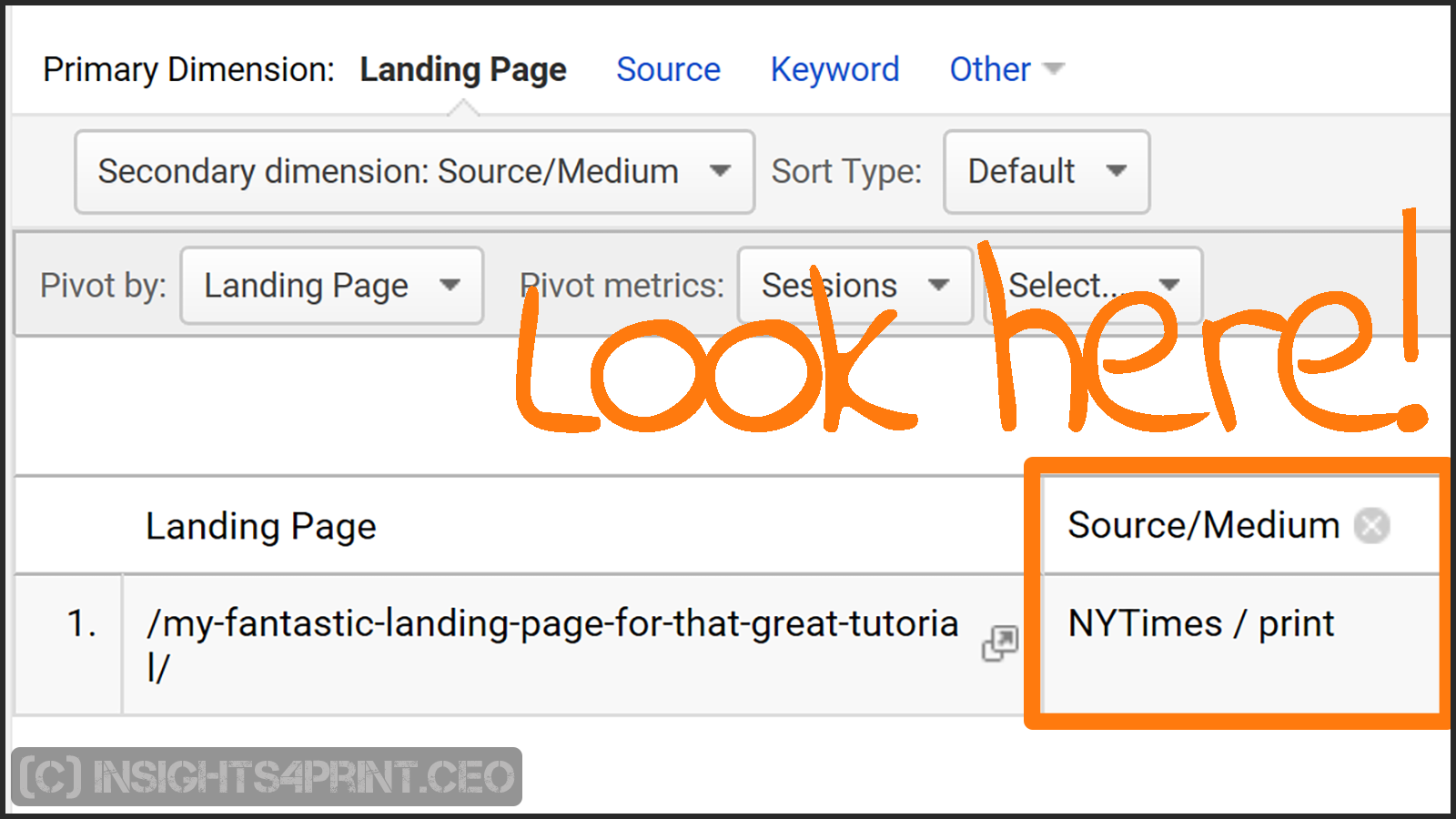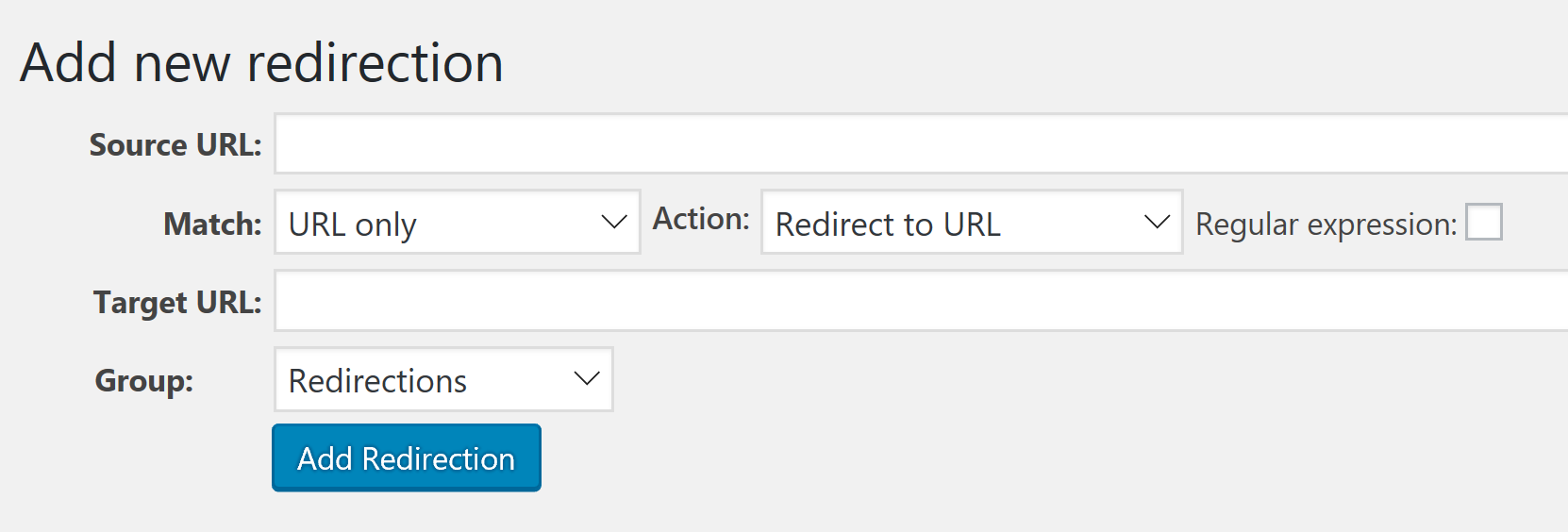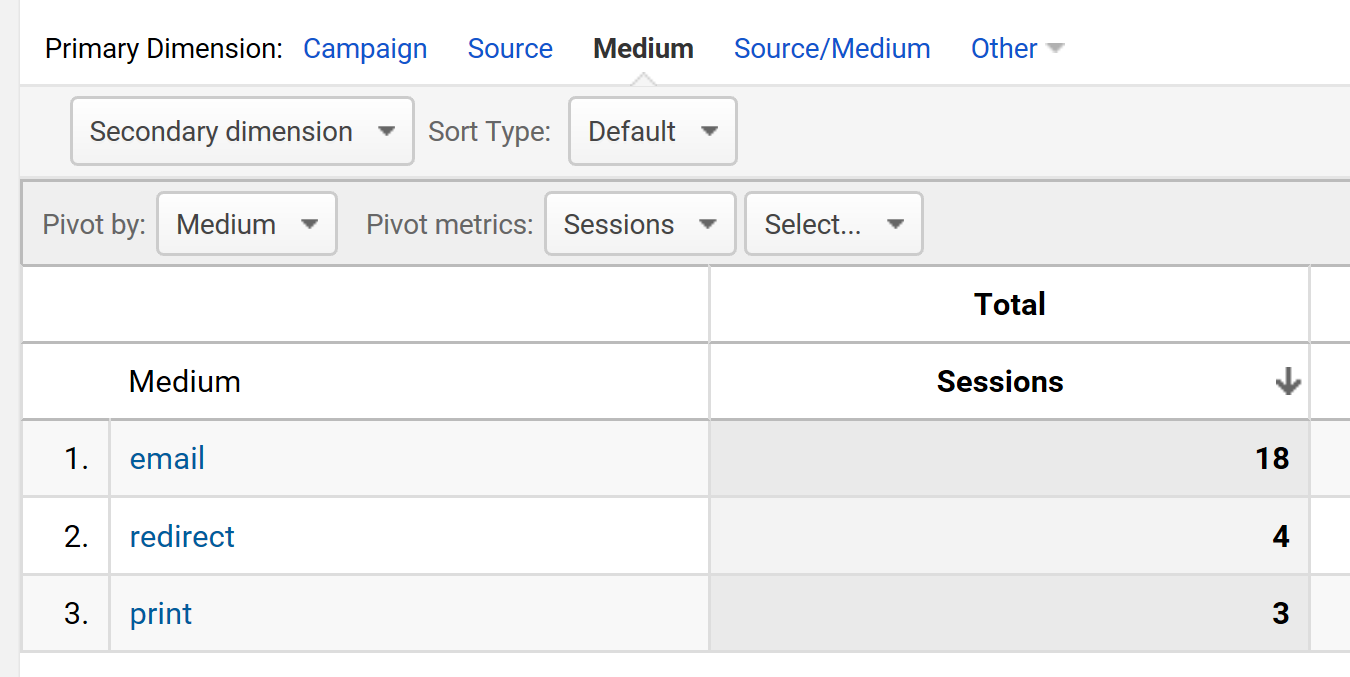
A few weeks ago, I published a step-by-step tutorial how to connect print campaigns to digital, by using HTML redirects. But it seems there is a much faster and better way. And with a little extra effort, you can even get your print campaigns into Google Analytics! Yes, you read that right: print campaigns that are tracked by Google Analytics. And, as a bonus, I’ll show you how to create a branded URL shortener that’s almost for free.
CONTENTS: 301 redirects | UTM codes | But email also tracks open rates! Yes, but these are flawed… | Why is this important?
301 redirects
Last week I was looking into URL shorteners, to use in a project I’m working on. And to be more specific: I want a branded URL shortener that I can tweak myself, so I don’t have to use those default long codes that systems like Bit.ly and Goo.gl create. These might seem a good solution, but their short URLs are really hard to remember, try e.g. to remember this one: bit.ly/2nVjhnc. So in the case you want a URL that is easy to remember, you need to be able to tweak it yourself. Some URL shortener services offer this as a paid service, but I wasn’t willing to pay that kind of money, so I decided to do it slightly different.
URL shorteners work with ‘301 redirects’, which are different from HTML redirects, the kind I used in the first tutorial. And most important: they are superfast. Essentially they provide the information to the browser that the content on this URL was moved permanently to another address and redirect you to that new location.
If you are using WordPress, there are plugins available that will make it very easy to use this kind of redirects. So for my branded short URL, I first bought a short domain name (i4p.ceo) and installed WordPress on it (many providers offer a ‘1 click WordPress installation’). And then I installed the ‘Redirection’ plugin, which will handle those 301 redirects. I also installed a security plugin (Wordfence) and one to handle 404 pages (‘page not found’). That one will redirect all visitors to the homepage when a page was not found. And the homepage is redirected to https://www.insights4print.ceo/ So there are no content pages on i4p.ceo, only redirects.

With the redirection plugin I created a short URL similar to the ones I used in the tutorial I already mentioned: i4p.ceo/NYT201701. It does have more characters than the Bitly short URL I used above (bit.ly/2nVjhnc), but it is easier to remember. It is for an ad in The New York Times (NYT) and was published in the first month of 2017 (201701).
If you also want to use random generated short URLs, there are a number of random code generators on the internet, e.g. https://www.random.org/strings/. Please note that WordPress is case insensitive, so a and A are considered the same. Which means that with 1 character you can get 36 different codes (26 letters + 10 numbers), with 2 that is 36×36=1296, with 3 codes you get 46.656 different combinations. If you need that many options, you might want to invest in a branded Bitly account, or one from a similar service. If you don’t need to manage a huge amount of short URLs, working with WordPress plus the redirection plugin will be a good and cheap choice for you. My i4p.ceo URL shortener cost me less than 100 euro and 15 minutes of work to install WordPress and the plugins…
UTM codes
Now I have a specific landing page for my print campaign (step 1 in the original tutorial) and an easy to remember short URL (i4p.ceo/NYT201701, step 2), which will redirect users to that specific landing page (step 3). The extra step I need to get this into Google Analytics, is adding a ‘UTM code’ to the outgoing redirect URL in the WordPress plugin. There are five types of information you can add to the URL:
- source,
- medium,
- campaign,
- term,
- content.
Source is mandatory, the other four not. You can find a complete overview about them in this Google Support page.
When using the first three parameters in a creative (and consistent) way, you can add valuable information for the statistics of the receiving site (insights4print.ceo in this case). For the short URL I just created, I’ve added the following information:
- campaign = tutorial,
- medium = print,
- source = NYTimes.
Combined it looks like this:
?utm_campaign=tutorial&utm_medium=print&utm_source=NYTimes
And the complete URL I’m referring to will look like this:
https://www.insights4print.ceo/my-fantastic-landing-page-for-that-great-tutorial/?utm_campaign=tutorial&utm_medium=print&utm_source=NYTimes
It is this code that I’ve entered as ‘target URL’ in the Redirection page in the i4p.ceo WordPress installation.

If you want help creating these UTM codes, you can use the Google campaigns URL builder.
When somebody uses that short URL (i4p.ceo/NYT201701), it will be redirected to https://www.insights4print.ceo/my-fantastic-landing-page-for-that-great-tutorial/ and Google Analytics will log the following parameters: campaign=tutorial, medium=print and source=NYTimes. And this will show up in the ‘campaign’ section of the Google Analytics account. You can find it in: Reports > Acquisition > Campaigns, or in Reports > Asquisition > All Trafic > Source/Medium.

If you do the same for different types of campaigns, e.g. adding ‘email’ to the ‘medium’ parameter for all your email campaigns, you will get a really nice comparison of all your different campaigns.
But email also tracks open rates! Yes, but these are flawed…
When comparing this way of tracking print with tracking email campaigns, there is one difference: you can’t measure how many people read the print piece but did not go to the campaign landing page by using the short URL. But beware: the ’email open rate’ is a flawed parameter: it is based on downloading an image in the email (this can be a invisible transparant image measuring 1 x 1 pixel ), but my email client e.g. prevents downloading images in emails by default… So I might have read the email, without having triggered the image download, meaning that my email is ‘unread’ in the statistics. Others might have changed the settings to always download images, which will trigger a download even if they didn’t really read the email at all. So this parameter is really flawed and has – in my opinion – no real value. The only parameter for a campaign that does matter is whether readers/viewers were triggered to go to the campaign landing page on your website. And that’s a parameter you can track for printed materials, as I showed you above.
Why is this important?
Marketing is cross channel, no doubt about that. But it should be really cross channel, which means: including print! Many digital gurus claim that you can only track your marketing efforts when they are digital, but that’s not the case. With a very simple trick, by adding a specific short URL to every printed piece, to every print campaign, that will eventually lead to an online campaign landing page, you can get ‘print’ into Google Analytics and follow the complete visit of those users generated by a print. And don’t forget: people trust printed ads more than digital ones, as I’ve shown in a previous article.
PS: if you are not that familiar with Google Analytics, here is a good beginners guide.


Be the first to comment